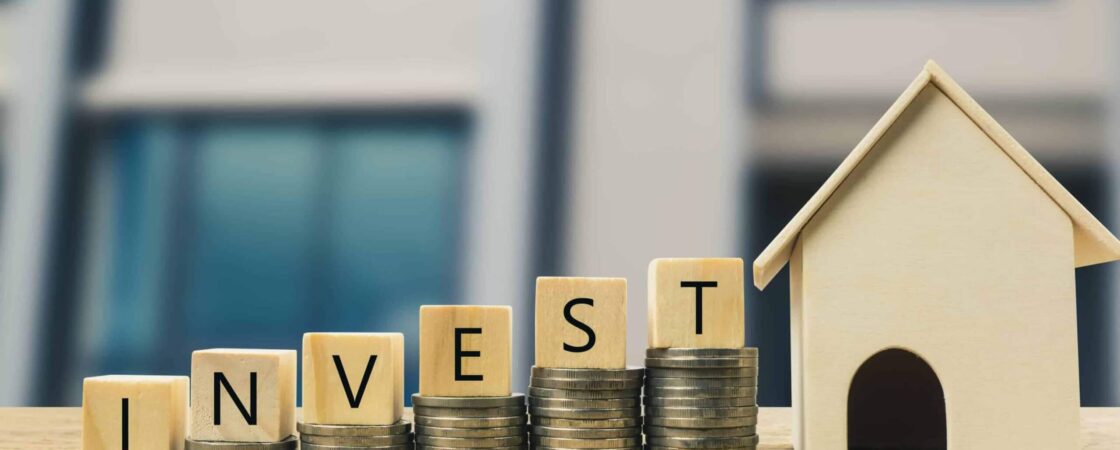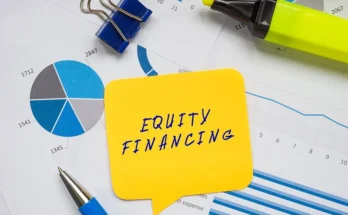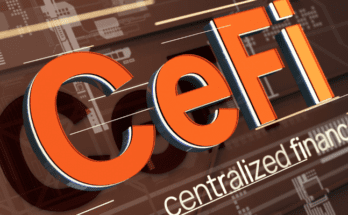An investment property is a house that you buy to make money. The phrase “investment property” can be used for anything from a place with one unit to a city’s tallest office building.
A great way to diversify your portfolio is to buy an investment property. You can purchase land to develop in the future, flip a property, buy a property for an elderly relative to live in and enjoy the appreciation when it sells, or rent out the property to create a passive income stream.
You don’t need much money to start investing in real estate, but you do need a lot to start investing in the stock market.
For those who have chosen to invest in real estate, done their research, and found a good deal, the next step is to think about how to get the money to pay for the property.
Benefits of Investment Property Loans
With investment property, the pros and cons rely on the type of property you buy and what you plan to do with it. It’s a good idea to buy a rental property because of the following reasons:
A Safer Investment
Real estate is less risky than stocks, bonds, and shares. The real estate market is generally more stable and easier to understand, especially for people new to investing.
Also, property values tend to rise along with inflation. You can use equity to fund your investment, giving you a steady cash stream or a suitable refund.
Tax Benefits
As a real estate investor, you can get the most out of your purchases by taking advantage of tax breaks like:
- Negative gearing is when the mortgage costs and other bills exceed the rental income. You can subtract the cash, which helps you pay less tax.
- Investors can get a depreciation allowance for fixtures and fittings, and you may also be able to get a building allowance discount.
You can also deduct some of the costs of managing and keeping your investment property and the property’s value going down over time. You’ll be able to save money on fees and care costs and make more money with these tax breaks.
Remember that some tax breaks depend on which State or Territory you live in, so it’s best to check ahead of time.
An Adaptable Asset
Compared to other types of investments, an investment home can give you much more freedom. As an investor, you can sell or rent the house. If you own a vacation home, for example, you can rent it out part-time to make extra money and take your vacations during the other times.
Passive Income
Rental properties are the most popular type of real estate investment. Rental houses are homes you buy with the plan of renting them out. You don’t have to work much to make extra money from your rental homes.
It might be more work as an owner to deal with tenants, do repairs and maintenance, and do other tasks, but it could be an excellent investment in the long run.
Capital Growth
Capital growth is when you buy and sell a house for more than you paid. The value growth rate over time can differ based on location and market conditions. You can also grow more capital by making intelligent changes to your investment property over time.
It would help to sell your home at the right time to get the most out of capital growth. For example, if the market in your area is hot, you can get the most out of your investment by selling your home immediately.
Types of Investment Property Loans
Below are some of the types of investment property loans:
Conventional Loans
The conventional loan program is the only type of loan that lets you buy a rental property with no strings attached. You don’t have to live in the home to qualify, which differs from government-backed mortgages.
When you get conventional credit, you should be able to put down 20% of the home’s price. But for an investment property, the loan might want 30% of the money as a down payment.
When you apply for a conventional loan, your credit score and credit history determine whether you are accepted and the interest rate on the loan. Lenders also look at the borrower’s income and assets. And, of course, buyers must show that they can pay their current mortgage and the monthly payments on an investment property loan.
The debt-to-income (DTI) ratio doesn’t consider renting income in the future, and most lenders expect borrowers to have enough cash on hand to pay their mortgages for at least six months.
Tapping Home Equity
Another way to get an investment property is to use your home’s wealth. You can do this through a home equity loan, line of credit (HELOC), or a cash-out refinance. You can take up to 80% of the home’s equity value to buy, fix, and rehab an investment property.
If you use equity to support an investment in real estate, some pros and cons depend on the type of loan you get. For example, with a HELOC, you can borrow against the property like you would with a credit card, and most of the time, you only pay interest each month. But the rate is usually flexible, which means that if the prime rate goes up or down, so can the rate.
Your rate would stay the same with a cash-out swap, but the loan term might be extended. If you borrow longer, you might have to pay more interest on your primary home. That must be weighed against how much money you think an investment home would make.
Loans for Hard Money
A hard money loan is a short-term loan that works best for flipping a business property instead of buying and keeping it, renting it out, or building on it.
Buying a house with a hard money loan and then paying it off immediately with a conventional, private, or home equity loan is possible.
However, if you don’t plan to flip the house, starting with one of the other options is easier and cheaper.
A hard money loan may be easier to get than a standard loan, which is one of the good things about using one to pay for a house flip. Lenders still look at things like credit and income, but they mainly care about how profitable the property is.
The home’s projected after-repair value (ARV) determines if you can repay the loan. You can also get loan money in just a few days instead of waiting weeks or months for a regular mortgage to close.
The cost is the most crucial problem with getting a fix-and-flip hard money loan. The lender may charge you as much as 18% interest on this type of loan, and you may not have much time to pay it back. A lot of the time, the terms of hard money loans are less than a year.
You might also have to pay more origination fees and closing costs than traditional loans, which could lower your returns.
Loans for Private Money
Private money loans are loans that are given by one person to another. Most private money loans come from lenders who are friends or family of the owner. At local real estate investment networking events, you can meet people willing to lend you money for an investment property if you don’t have any friends or family who can do so.
The well-known podcast BiggerPockets about real estate investing lists real estate investment clubs in your area that you can join to meet other people in the field.
The loan terms and interest rates for private money loans can differ, ranging from very good to very bad, based on the borrower and lender’s relationship. Most of the time, these loans are backed by a formal agreement that lets the lender take back the property if you don’t pay.
If you are new to real estate buying, consider how your relationship with the person who lends you private money might change if you don’t pay them back before you sign an agreement with a family member or close friend.
Requirements for Obtaining Investment Property Loans
Lenders see loans for investment properties as riskier than loans for a primary residence. Because of this, the rules say you have to show that you are more financially stable. Some requirements that are only needed for rental property loans are:
Qualifying With Property Income
Lenders might let you add the rental income from the home you want to buy, either actual or projected. For instance, FHA and VA multifamily loan rules will count the rent you get from the units you don’t live in as part of your qualifying income.
Proof Of Rental Income
The lender might want copies of current leases, a background of rent rolls, and tax returns showing rental income. Most of the time, the assessment will also include a check to see how much similar homes rent for in the area.
Property History
Some loan programs want you to show proof or talk about your experience renting homes. Others might wish to use your tax returns to prove you’ve previously handled rental dwellings.
Higher Down Payments.
If you plan to live in one of the units, you can get an FHA or VA loan and only pay 3.5% down on a multifamily house. Most lenders need at least 20% down for a rental home, even though standard rules allow down payments as low as 15%. Most of the time, gifts aren’t allowed when buying a rental home, so the money you use must be your own. But donations for the down payment are okay for VA and FHA multifamily home sales.
Needs For Higher Credit Scores
You’ll need a credit score of at least 640 for a rental property mortgage. However, if you’re buying a multifamily home, you may need a score of 700 or higher.
Reserves
These are often called “mortgage reserves,” the regular payments the lender wants to see in the bank. Depending on how many homes you own, the amount usually equals two to six months’ mortgage payments.
Drawbacks of Investment Property Loans
Putting money into real estate has problems like putting money into any other business. Now that you know these cons, you can decide if buying in real estate is a good idea.
High Costs To Enter And Leave
It’s hard to buy a house as a business. It would help if you thought about getting the money, putting down a deposit, and other costs such as legal fees, stamp tax, and real estate agent fees.
Putting money into real estate isn’t easy, and the price may be too high for some. Use a home loan tool to determine if you can afford an investment property.
Rates Of Interest May Go Up
In the same way, if interest rates rise after you’ve bought your investment home, the costs could still add up. If interest rates increase, you’ll have to pay back more, which could cut your overall income.
Not Enough Money
That said, investment homes are not the best choice if you need to cash out quickly. It takes a long time to sell a house. Your wait time will be a few weeks, even if the market is perfect. This is because of the paperwork and checks.
Needs A Lot Of Work And Time
It takes much time and care for investment properties, especially rental homes. It would help if you thought about the costs of repairs, following up with renters, and other things. This might be hard for you if you’re not used to this kind of work.
Possible Loss Of Value
It’s not always true that investment homes get more valuable over time. You could end up paying more for the house than it is worth if its value drops.
Other Available Loans for Investment Property
If nothing else works, you have to think outside the box. Luckily, there are several other ways to finance your rental property.
Life Insurance Plans
Depending on the type, life insurance may be seen as a flexible asset, which is better for lenders. For example, a fixed life insurance policy makes it easy to get cash. When you buy a new home, you can borrow against that money. This makes you more appealing to lenders, which could make it easier for you to get money.
Peer-to-peer Lending
In the past few years, peer-to-peer lending has grown in popularity, and now there are a lot of online lending sites. This is a way for investors to meet with people who need money for different reasons, and investors like it because it’s another way to invest. Fees and interest rates are usually low, depending on your credit.
Loans On Margin
Margin loans are a type of credit line that can be used to buy a house. The savings of the borrower secure them. They’re usually used for short-term funding needs and have some risks, like a margin call and more considerable losses if the value of your investments goes down.
Fix-and-flip Loans
Fix-and-flip loans are usually given to people who want to sell houses quickly. Most of the time, the interest rates on these “hard-money” loans are between 12 and 18%, plus two to five points. Find a house you want to fix and sell in the next 12 to 18 months. A fix-and-flip loan might be something you want to look into.
Credit Cards And Personal Loans
Getting a personal loan or credit card to help pay for part of your home can be easy. Personal loans may let you borrow up to $100,000, and some credit cards offer 0% APR for the first few months.
Personal loans and credit cards make it easy to get money, but the interest rates are usually relatively high after any introductory deals. So, these shouldn’t be your first choices, but they can help you get extra money if needed.
Conclusion
Renting out a house or taking on a house-flipping job are risky investments that could pay off big. Getting the money you need to invest shouldn’t be hard as long as you know where to look. As you look at the different ways to borrow money, remember that each has short- and long-term costs that can affect the investment’s bottom line.




